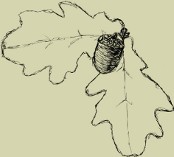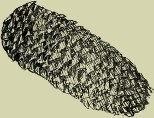42 41 40 39 38 37 36 35 34 33 32 31 30 29 28 27 26 25 24 23 22 21 20 19 18 17 16 15 14 13 12 11 10 9 8 7 6 5 4 3 2 1
Issue 8 (1968)
The results of theoretical and experimental research in wood plastification by chemical-mechanical method are given.
It is ascertained that after chemical wood treatment with ammonia wood plasticity increases significantly. Such wood may be packed at specific pressure 2-3 times lower and at lower temperature. The number of applicable synthetic resin may be reduced significantly as well as wood plastics and boards with higher indices of physical-mechanical properties may be obtained. It is shown that wood plasticization with ammonia is connected with chemical wood changes and its submicroscopic structure changes. On the basis of the results new technology variants are worked out which allow to obtain wood plastics from sound, laminated and ground wood as well as hard boards from sawdust.
The indices of some physical-mechanical properties of new materials are given. The possibilities of their application in machine building, construction, furniture industry and other branches of national economy are shown.
Basing on results of studies by other authors the hypothesis was put forth that the thermal processing with hot air might be used in order to decrease the hygroscopicity and sorptive changes in wood dimensions. In order to verify this assumption, wood of alder (Alnus glutinosa Gaertn.) and sycamore maple (Acer pseudoplatanus L.) in a form of boards with dimensions of 32 × 100 × 450 mm was subjected to thermal processing in the air with the temperature of 170, 180, 190 and 200°C during 4, 6, 8 or 10 hours. After 48 hours since the completion of processing, deformations (warps) of boards were measured and then during two months boards were conditioned in the air with the temperature of 20°C and relative humidity 65%.
From each board samples were taken for the examination of specific gravity, swelling in water and water absorption, equivalent moisture content in air with the temperature of 25°C and relative humidity of 65% or 95%, shrinkage to anhydrous state, tensile strength across grain and dynamic bending strength, impact resistance, hardness after Brinell's method, screw pulling force, and the adhesion of phenol glue and polyurethane enamel. Adhesion index provided the shear strength of wood glue joints obtained with the use of these bonds. In majority of tests there were used measurement techniques recommended by Polish Standards.
Research results are compared giving also the same data for the wood not subjected to thermal processing. Afterward there were calculated changes of the examined properties caused by thermal processing of wood and expressed against the same properties of wood not subjected to processing.
It was found that the thermal processing results in the hydrophobic condition of wood, considerably decreasing its hygroscopicity, as well as the shrinkage and swelling across grain in tangent and radial directions; changes in these properties are proportional with temperature and duration of processing. At the same time there occur, however, negative changes in mechanical properties of wood, namely the decrease in its tensile strength across grain, impact resistance, and screw pulling force, which are also proportional to temperature and duration of thermal processing. During this processing there occur considerable deformations of boards, while the colour of wood darkens. Other examined wood properties are also subjected to certain changes, however, not so obvious as the above mentioned ones.
In conclusion one can state that the thermal processing of wood with the hot air might be used only when certain lowering of its mechanical properties and change of colour are permissible. Due to the deformation of boards the treatment lowers also materials output.
Eight oil preservatives manufactured in Poland were subjected to examination. In 1961 the immediate effectiveness in wood protection against insects was determined on the base of laboratory experiments. At the same time border insecticide values were established for these preparations. After the completion of experiments wood blocks on which examinations were carried out, were carefully set and bound and during five years stored in a draughty garret. In 1966 these samples were again infected with larvae in order to find the effectiveness of the protective action of the examined preparations and for the repeated determination of the border insecticide value. These tests revealed that the examined preparations, in spite of the lapse of five years since the moment of the preservation of wood with them, still acted lethally on Hylotrupes bajulus larvae. Their toxicity, however, against H. bajulus larvae decreased. The extent of the decrease in toxicity was determined by the comparison of border insecticide values determined in 1961 and 1966. Both series of experiments were run according to standards valid in Poland, while the use of the same blocks and H. bajulus larvae of similar size and origin allows for the comparison of results.
Results of investigation on the penetrability of various solutions preserving salt water into wood are presented in the paper. Pine sapwood of 12, 20, 28, and 70% moisture content was subjected to penetrability tests. Dip treating method was used with the time of soaking from 1 to 8 minutes.
It was found, that the depth of penetration of investigated preservatives depends on their quality, time of soaking, and moisture content of wood. When the longest time of soaking was applied, the depth of preservative penetration amounted, in the best case, up to 5.6 mm in radial direction. Best results were obtained with preservatives containing hydrogen fluorides. Preservative based on sodium pentachlorophenlate penetrated the tissue in radial direction only to the depth of 1.3 mm during 8 minute soaking.
There was studied the penetration of Fungol in a form of 10% water solution Xylamit popular into the duramen of pine wood. Following parameters were used: duration of bath — 5, 10, 15, 30, and 60 minutes, temperatures of solutions — 20, 40, 60 and 80°C (Fungol) and 20, 40, and 60°C (Xylamit), moisture of wood — 16, 28, and 50%. The quality of impregnation was characterized by the depth of penetration, quality of absorbed impregnant and the degree of protection of the impregnated wood layer against the development of fungi. Best results of the depth of Fungol penetration were obtained for the duramen with 50% moisture, with 20°C of solution temperature, while for the depth of Xylamit popular penetration — for a duramen with 16% moisture and 20°C of impregnant's temperature. The quality of the protection of impregnated wood layer was sufficient except that for the duramen with 50% moisture impregnated with Xylamit and duramen with 28 and 50% moisture impregnated with Fungol — with 5 and 10 minutes of bath duration. On the basis of results obtained and data from literature, it was carried out an analysis of the mechanism of penetration of examined preparation into the duramen of pine wood.
there were studied changes in the mineral composition of the wood of pine, spruce, and beech occurring under the impact of the activity of fungi Coniophora cerebella Pers. and Merulius lacrymans (Wulf.) Fr. The content of twenty elements: B, Na, Mg, Al, Si, P, K, Ca, Ti, V, Mn, Fe, Co, Ni, Cu, Zn, Mo, Ag, Ba, and Pb, has been determined with the aid of wet and spectral analysis in healthy wood and that destroyed in vitro by fungi.
The total lose of mineral substances (ash) amounted from 25.0 to 55.5%, on average — to 37.9%. The content of individual elements was decreased within limits of 30-81,9%, on average by 50.6%.
Resulting from the analysis of variation the statistically significant quantitative differentiation of losses had the following course: 30-49%: B, Na, Mg, Si, K, Ca, V, Fe, Co, Ni, Mo, 50-69%: Al, P, Ti, Cu, Ag, Ba, above 70%: Zn, Mn, Pb.
Both fungi C. cerebella and M. lacrymans decreased the content of individual elements to an equal extent. The quality of mineral components was more depressed in the wood of pine and spruce, than it was in the beech wood.
The study aimed at the analysis and assessment of rules concerning the classification of pine sawtimber as specified in Polish Standard PN-58/D-95007 “Softwood sawtimber”, by establishing economic and technical effects obtained in the conversion of individual quality classes of sawtimber material.
The paper attempted the determination of the relationship between the quality of sawtimber (determined in the above mentioned standard), and the course of selected technical and economic indices. The reported study is also an attempt of the general interpretation f sawmill industry economic effectiveness and is supposed to be a contribution to the organization and planning of this industry and to the methodology of economic effectiveness appraisal.
In order to examine economic effectiveness in conversion of individual quality classes of sawtimber, a comparative financial account was adopted as a most suitable for this purpose. This enabled to show direct effects considering variable raw material quality.
The course of especially selected economic and technical indices was accepted as a criterion of conversion effectiveness appraisal.
Basing on this criterion, it was found, that principles of sawtimber classification specified in the analyzed Standard failed to reflect objectively the quality of sawtimber because of to small differences between 2nd and 3rd quality classes with simultaneous rather high differentiation of prices between above mentioned quality classes of roundwood.
The paper includes the analysis of the consumption of wood and wood products in coal mining industry and presents the first attempt of a synthetic approach to the relationship between the consumption of saw timber and wood products and the size of the output of hard coal in Poland.
In the course of the determination of more important relationship there were verified hypotheses about the existence of trends and the validity of correlation was determined.
Modulus of elasticity during stretching, longitudinal compressive strength, static bending strength, and deflection at the moment of destruction, as well as the resistance to transversal pressure were examined comparatively in rods made of three osier varieties with differentiated proportion of pith. It was found that irrespectively to variety mechanical properties of rod's wall are practically uniform, while strength properties of whole rods are the higher, the lower is the relative dimension of pith diameter. There were derived relationship between individual mechanical properties and this factor, and given recommendations for the comparative evaluation of strength quality of osier rods.
Operating with the gum colophony, phtalic anhydride and pentaerytrithol, with yellow lead as the catalyst or without any catalyst, there are received the very light derivatives with the colour number till 5A inclusively. Those light derivatives (softening point 110-118°C after Kramer-Sarnov) are very available to the manufacture of cover coats and so-called four-hour varnishes, The protective coats (enamels) made from such derivatives are with very high technical properties.
The supplementary operation of maleic anhydride on the pentaerytrithol esters of dichroman derivatives of gum colophony enables to prepare the compounds with softening point of 170°C (Krämer-Sarnow). Such compounds are less useful because of low solubility in most of organic solvents. The similar compounds with softening point of 150-160°C are more advantageous. They are suitable for manufacture of cover coats of different kind as well as for printing inks. When the same derivatives obtained from wood colophony, their softening point is over 120°C and they are a good solubility in most of solvents used. This paper deals with the optimum conditions for preparation of the most suitable compounds.
There are given the prescriptions to obtain the tall oil colophony derivatives with softening point about 120°C after Krämer-Sarnow method. The quality of derivatives depends from the accuracy of separation of fatty acids and rosin ones from tall oil. The separation was done using urea clatrathes. The sufficient purity of rosin acids was given after three times clatrathion.
Tall oil colophony (rosin) was condensed with resol by heating till 260°C and then esterified with pentaeritrithol. As resol we understand the product of condensation of dian (phenol condensed with acetone) with formaldehyde.
The products obtained are dark in colour but very good or good soluble in a number of solvents. There is found a possibility to obtain of derivatives light in colour.
Gum colophony was treated with metallic salts to obtain organic salts having high-temperature softening point. Two methods were used: melting of colophony with oxides and (or) acetates of Al, Cu, Co, Bi, Zn as well as precipitating of sodium salts with acetates and (or) sulfates and (or) nitrates of Al, Cu, Co, Zn, Cd.
It was found, that the creation of rosin salts is the reaction needing very high temperatures (nearly 250°C) or the medium with metallic ions having a good mobility.
Really easy by preparation melting method yields not as good results as precipitating one. Melting needs very high temperatures — nearly of thermal decomposition of rosin — and therefore rosin salts are rather changed chemically. When precipitating it is the ionic reaction. The salts used should be stable in reaction conditions (pH 7-10) and added in dilute solution. It is very important, especially when light hydrolysable salts used, e.g. bismuth ones.
Using precipitating methods it is possible to obtain the salts with very high softening point (zinc salt with softening point over 275°C), having quite good solubility in benzene and different solvents.
One part of intended for testing turpentine samples were stored during eleven year period in metal containers viz. petrol drums, while another part was stored in carboys. In order to inhibit autoxidation processes, hydrochinone was added to the pharmaceutical turpentine in one of carboys. Investigation proved that along with the changes of physicochemical properties of investigated turpentines, also substantial changes in their chemical composition were occurring.
After the termination of above mentioned storage period, investigated turpentines contained 21-48% of tertiary terpene alcohols. The presence of aldehydes and ketones was also confirmed. Investigation results are proving that there are some differences between tested turpentines as well as between the same turpentines stored under different conditions.















 Download PDF
Download PDF